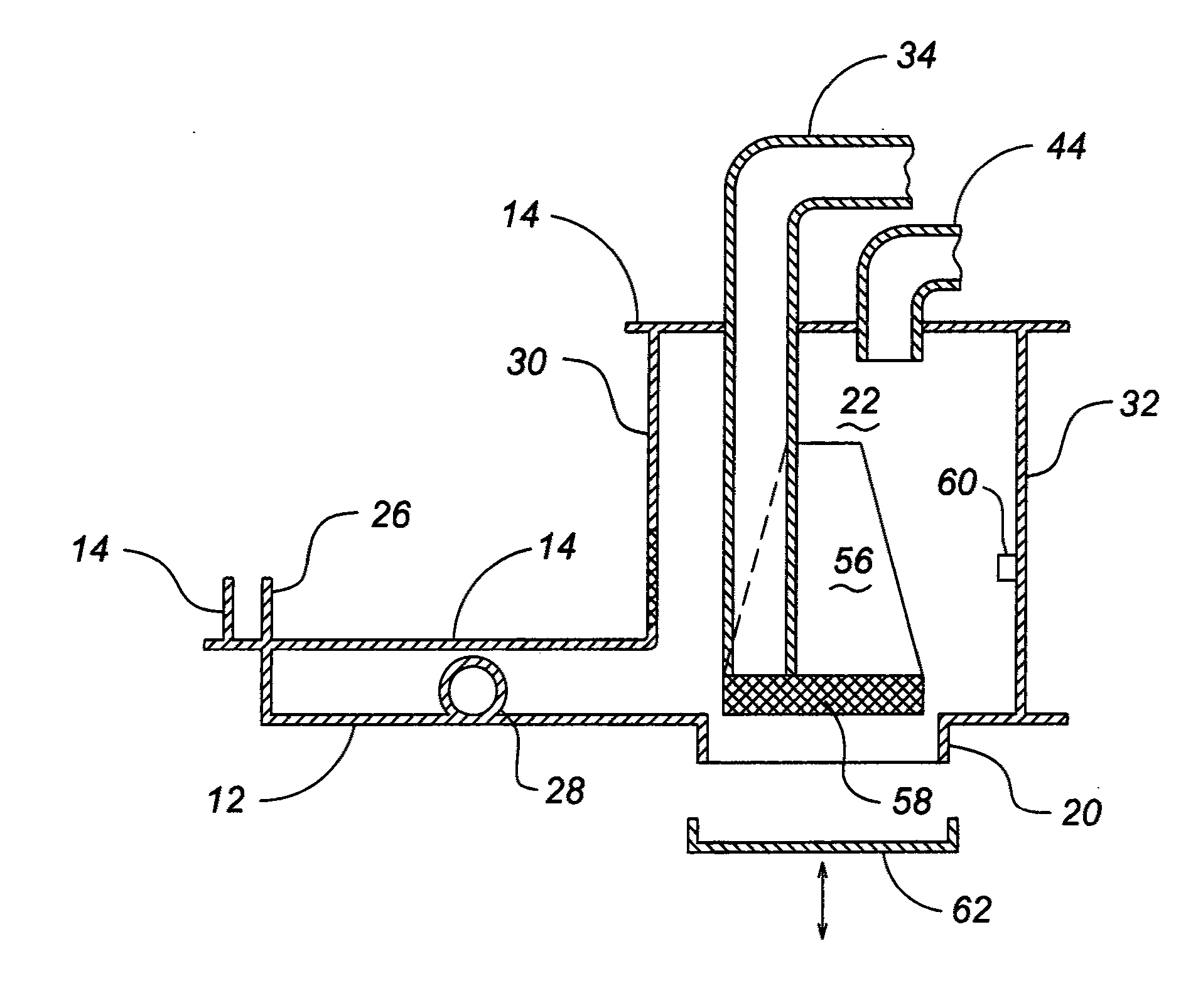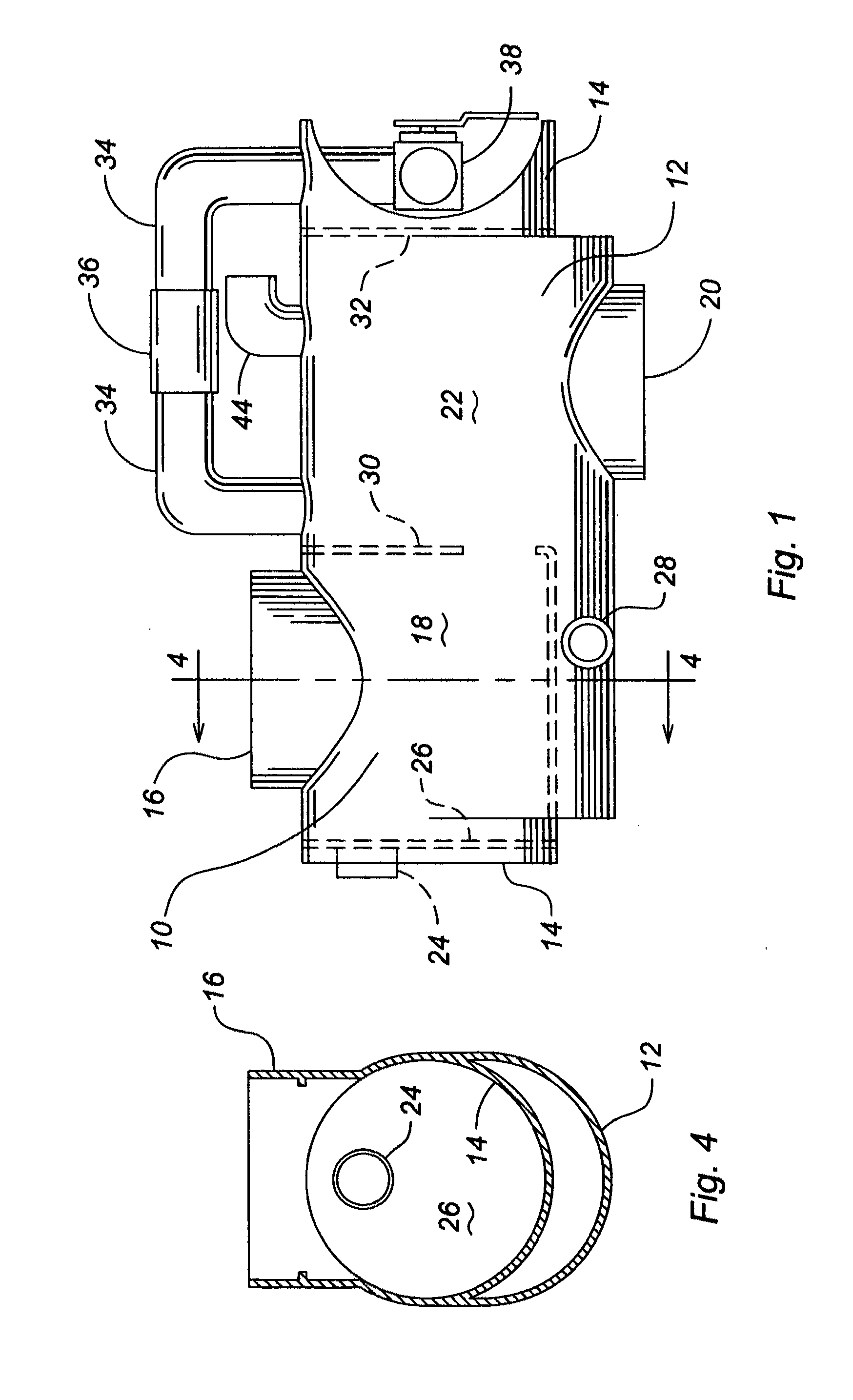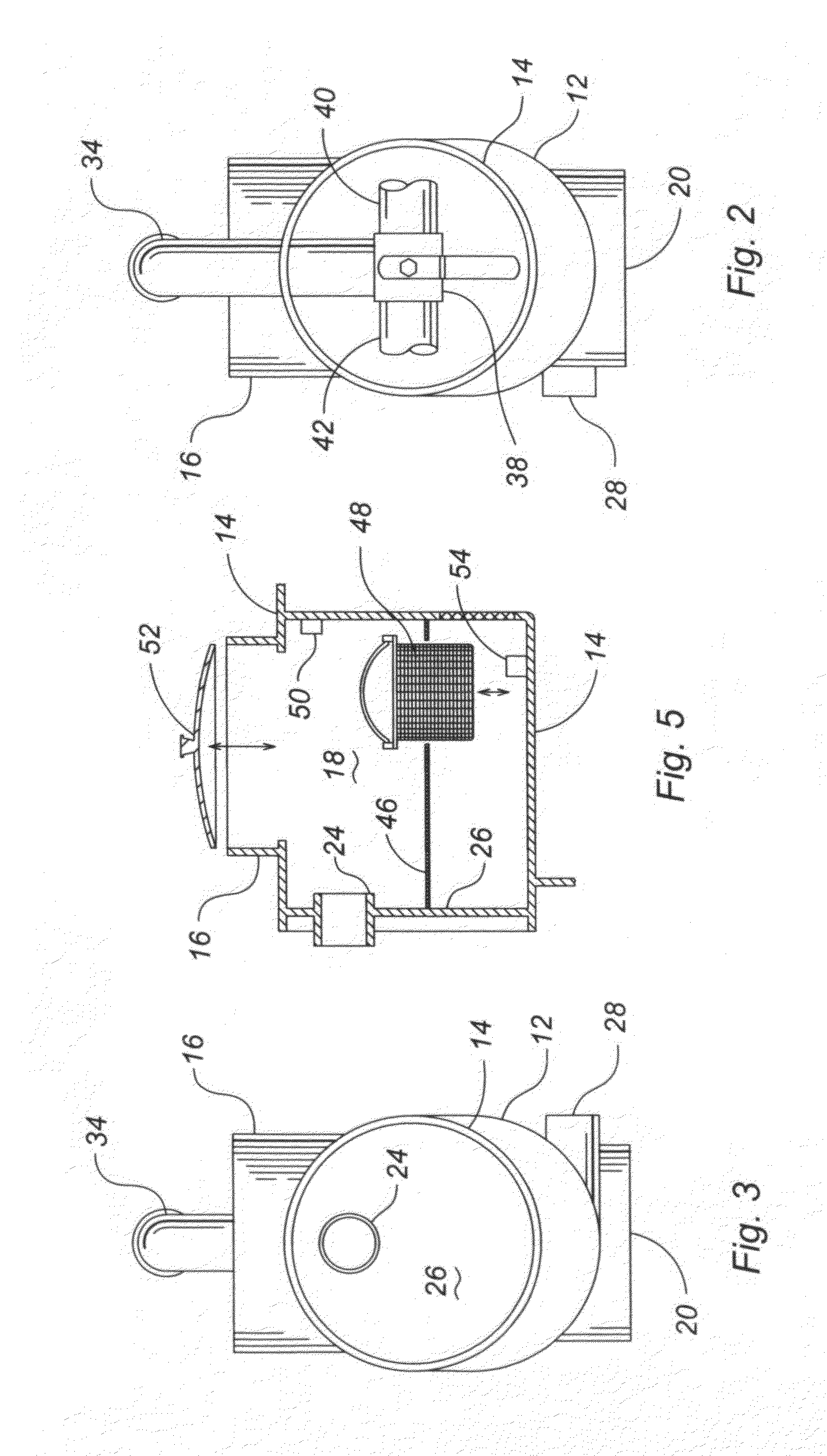Bilge pump and method
- Summary
- Abstract
- Description
- Claims
- Application Information
AI Technical Summary
Benefits of technology
Problems solved by technology
Method used
Image
Examples
Embodiment Construction
[0022]With reference to FIGS. 1-4 where like numerals have been used for like elements thereof, a preferred embodiment of the vacuum assisted bilge pump of invention is illustrated. The pump body may be molded but it has been found convenient to form the pump body from two sections, each approximately 8.5 inches in diameter, of a suitable non-corroding and electrically non-conducting pipe such as PVC or other plastic or fiberglass. The shorter section 12 is split through the longitudinal axis thereof and fused to the longer section 14 as illustrated. A cradle (not shown) may be provided to support the pump, and the pump may be integral with the cradle or removably mounted thereon. Movement of the cradle and pump may be facilitated by the use of conventional casters. (not shown)
[0023]A third section of pipe 16 approximately 7.25 inches in outside diameter is oriented vertically and is fused to the upper portion of section 14 adjacent the input or left end of the body 10, and the port...
PUM
 Login to View More
Login to View More Abstract
Description
Claims
Application Information
 Login to View More
Login to View More - R&D
- Intellectual Property
- Life Sciences
- Materials
- Tech Scout
- Unparalleled Data Quality
- Higher Quality Content
- 60% Fewer Hallucinations
Browse by: Latest US Patents, China's latest patents, Technical Efficacy Thesaurus, Application Domain, Technology Topic, Popular Technical Reports.
© 2025 PatSnap. All rights reserved.Legal|Privacy policy|Modern Slavery Act Transparency Statement|Sitemap|About US| Contact US: help@patsnap.com



